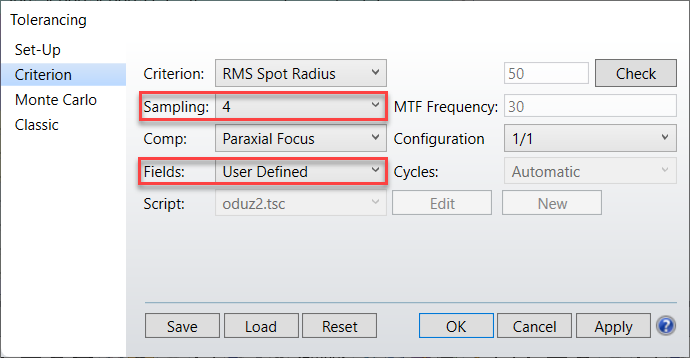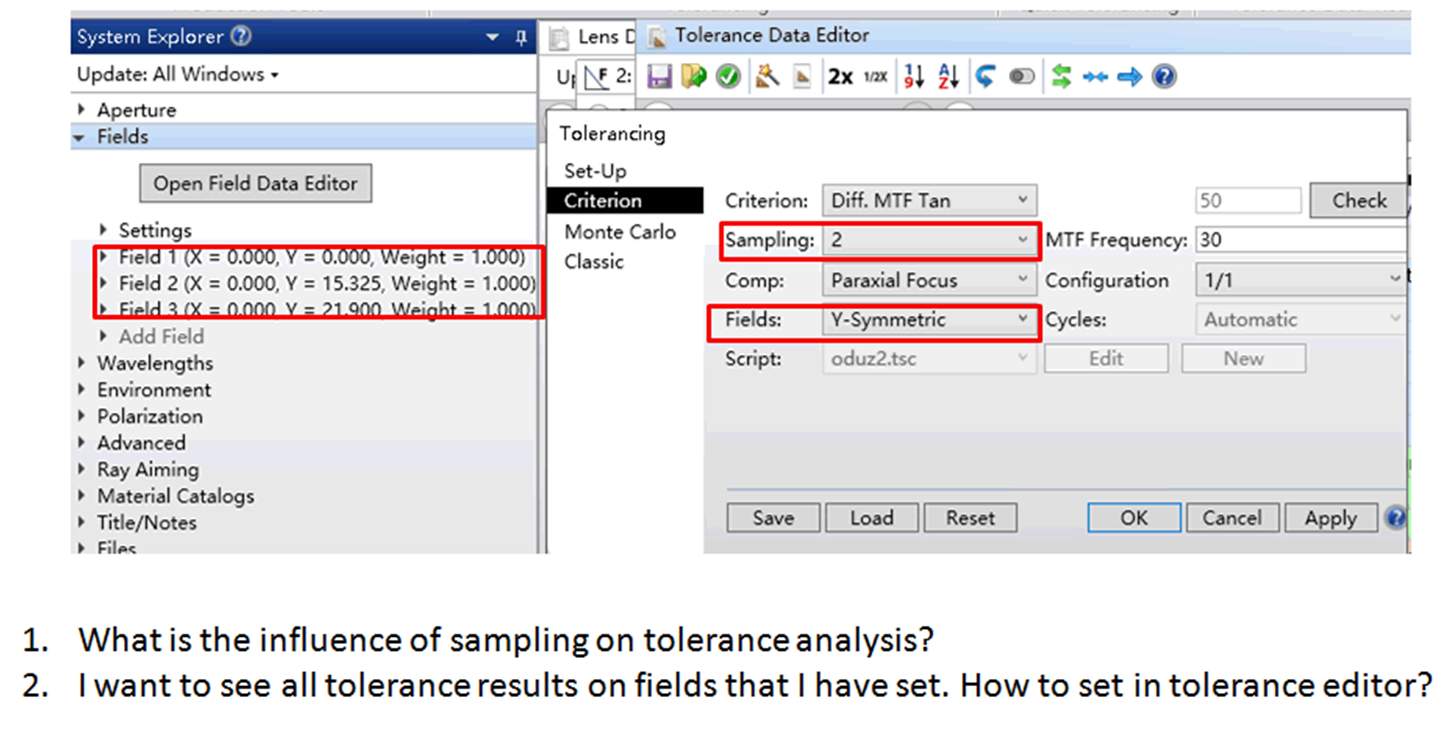Hello Helen,
Thanks for your question here!
So that everyone sees your questions, I will repeat them here:
- What is the influence of sampling on tolerance analysis?
Sampling is used to set how many rays are traced when computing the tolerance criterion. Generally, higher sampling traces more rays, and gives more accurate results. However, the execution time increases. If the selected criterion is RMS spot or RMS wavefront, then the sampling value is an integer that refers to the number of rays traced along a radial arm of the pupil in the Gaussian quadrature technique. The number of arms is always twice the number of rays along each arm. If MTF is the selected criterion, then the sampling refers to the pupil grid size, with a sampling of 1 yielding a 32 x 32 grid, sampling of 2 yielding a 64 x 64 grid, etc. Usually, a sampling of 3 or 4 is sufficient for quality optical systems. Systems with high amounts of aberration require higher sampling than systems with low aberration.
- I want to see all tolerance results on fields that I have set. How to set in tolerance editor?
Regarding the Fields setting, the User Defined option will use whatever field definitions exist in the current lens file. This option is required when using vignetting factors, tolerancing multiple configuration lenses, or using tolerance scripts. It is also highly recommended when tolerancing non rotationally symmetric lenses or lenses with complex field weighting that user defined fields be used.

You may read more about this in the Help system under:
The Tolerance Tab > Tolerancing Group > Tolerancing
If you have further questions, please let us know and we will be happy to help!
Best,
Csilla


